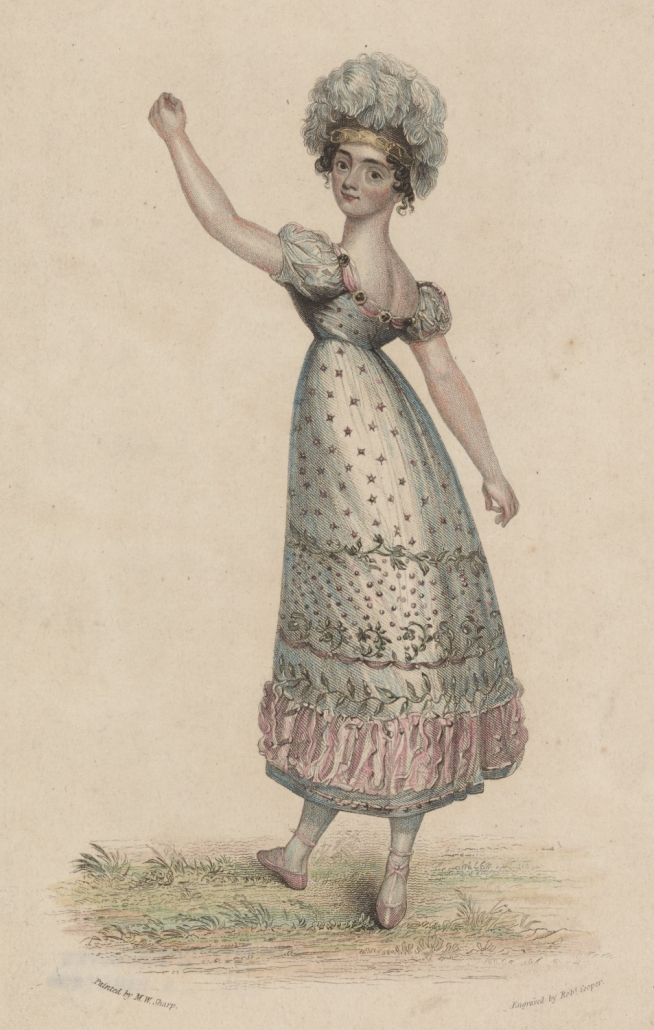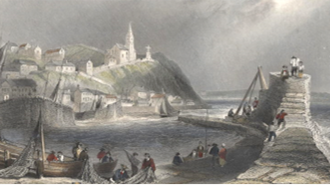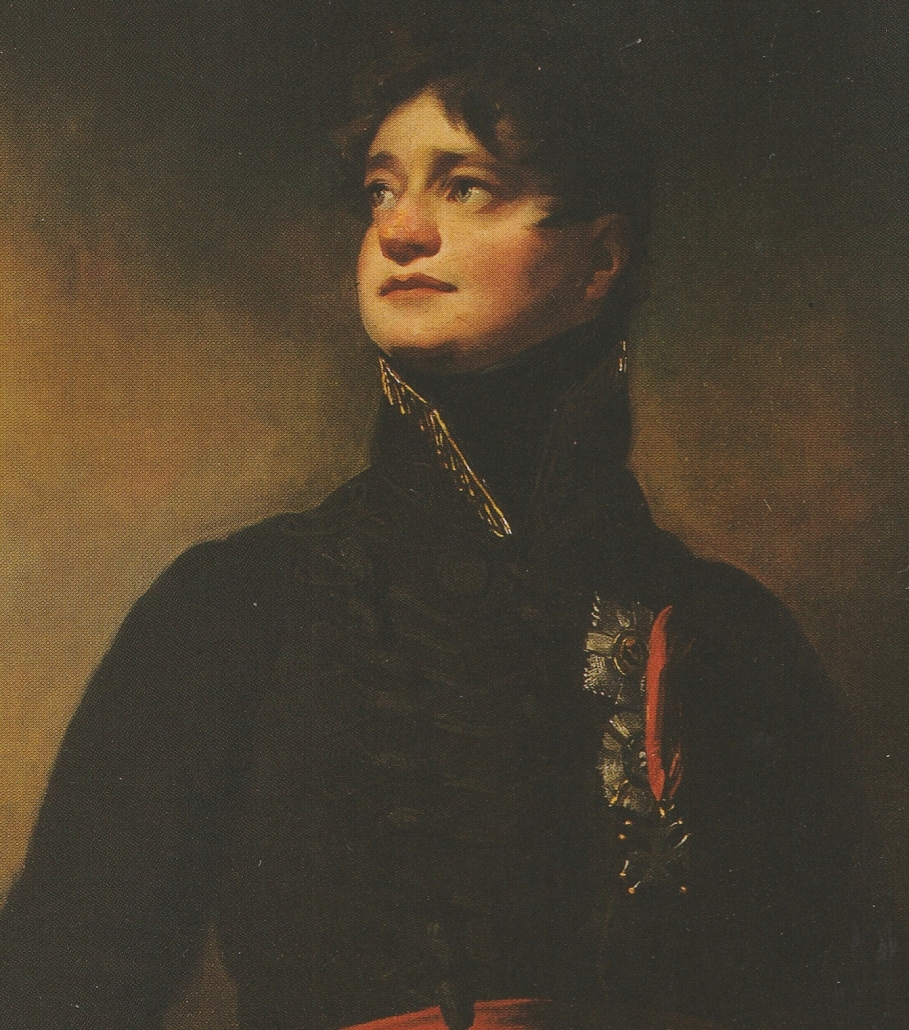Part 2 of 2
James returned home in September 1813 as the 4th Earl Fife, his father having died in 1811. He was received in Banff and Macduff with huge rejoicing, met by the Magistrates, the principal inhabitants of Banff, the incorporated trades and “all the inhabitants of Macduff”. Flags were displayed at the forts, the shipping, the hills; a salute was fired from the battery and “all the bells of Banff and Macduff rang a merry peal.”. In the evening there were illuminations and immense bonfires in every street, and on Doune Hill there “was one of such extraordinary size and brilliancy as completely illuminated the whole road from the bridge of Banff to Macduff”.
King George IV (as Prince Regent) made him a “Lord of the Bedchamber” (a trusted confidant and advisor), and later – 1827 – conferred on him the “Order of the Thistle” (of which there are only 16 at any time) and the Grand Military Cross of Hanover. James is wearing these insignia in the painting in Duff House’s North Drawing Room. He was also elevated to the British peerage as Baron Fife.

James became the Whig Member of Parliament for Banffshire in 1818, holding it until 1826. He was a keen Mason, becoming the Grand Master Mason for Scotland. In that capacity he laid a foundation stone for Waterloo Bridge in 1815 (opened 1817) and the Regent Arch in Edinburgh (opened 1819) amongst others.
James unfortunately found his resources were substantially curtailed. In 1816 James had to go to court to contest the Will of his uncle, who had left almost everything to his natural son, James Duff of Kinstair. He was ultimately successful, helped by the legal knowledge he displayed, to the delight of his friends and the surprise of his opponents.
During the 1820’s his name was linked to a few actresses, specifically Mademoiselle Noblet, on whom it is alleged he spent a fortune. It was also claimed by some he was the father of Maria Mercandotti, a very pretty dancer and actress he brought over from Spain – but the dates don’t fit with when he first met her mother!

Local good deeds
It is hard to imagine the esteem in which James was held locally, both before and after his almost permanent residence at Duff House from 1833. A very few of the many reasons for him being held in such high regard locally include:
- his support for the local farmers during times of hardship; supplying seed to them and most notably during the potato famine of 1847;
- several improvements and expansions at Macduff harbour; this picture shows men working on the harbour wall in 1842. This added to the prosperity of the town which had been planned by his uncle;

- creating, planning and growing the town of Dufftown (1817), intended to provide accommodation and employment for veterans of the Napoleonic wars;
- paving the pavements of Elgin;
- repaired and renovated much of Pluscarden Abbey;
- building the Fife Arms Hotel on Low St, becoming one of the finest hotels in the north;
- starting a soup kitchen;
- assisting with funds to erect a new church for the Episcopal communion (St Andrews);
- furnishing the County Hall;
- opening the Pleasure Grounds of Duff House to the public for walking and riding;
- developing his lands, planting new trees (including the huge Monkey Puzzle tree in memory of his friend from Spain, the Libertador of Argentine and Chile, Jose de San Martin); this led to the planting one hundred years later in 1950 of the Monkey Puzzle in Banff Castle grounds;
- and his particular delight of seeking out those that needed help. He is said on one occasion to have relieved an aged woman by carrying a sack of meal to her home for her; telling her to sieve the meal well before using it. On her return home she did, and was filled with joy at finding several golden coins.
Apart from his friendship with the King, he had many friends, British and international, and knew most of the key society people of the early nineteenth century. He often had grand parties at Duff House. In 1850, James’s birthday was celebrated (on Mon 7th Oct as the 6th was a Sunday) with flags and decorations throughout the town; arches of flowers were erected at the Fife Arms and Oak Hotel (bottom of Strait Path); even the coaches from Inverness and Aberdeen were decorated with “fantastic and yet beautiful” shapes of flowers. Bells, musicians, guns and mortars entertained a crowd that filled all the space from Bridge St to Greenbanks. There was a huge Ball, held at the Barnyards (now Duff House Royal), another for the youngsters, and a dinner attended by hundreds.
Although enjoying robust health for most of his life, apart from occasional after effects of his wounds from Spain, James took ill in February 1857 and died on 9th March. The Banffie reports that 10,000 people turned out for his funeral. James Imlach, historian of Banff, summed him up as “A warrior and a courtier, a nobleman and a statesman, he rejoiced most of all in the title of the poor man’s friend.”

